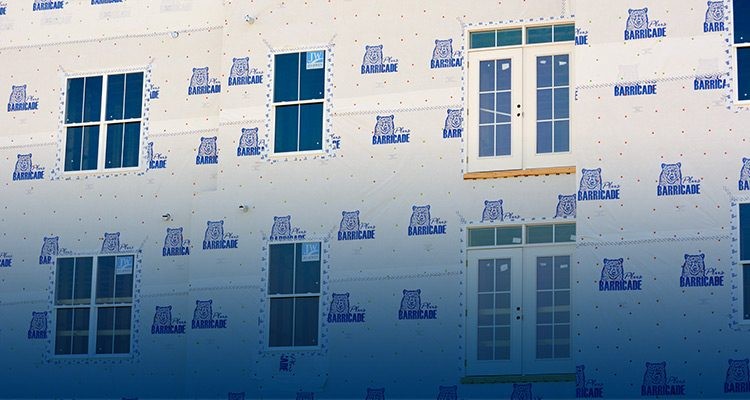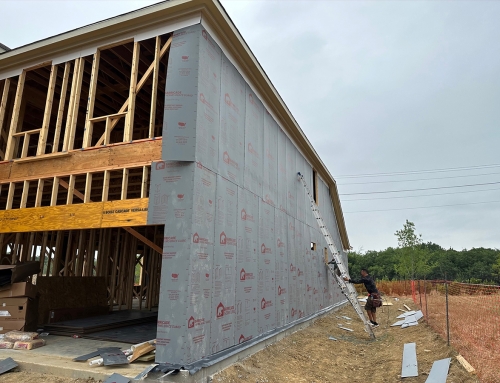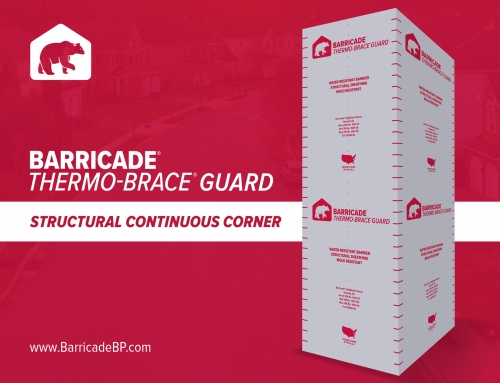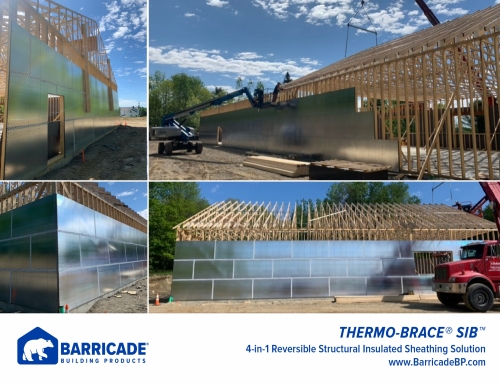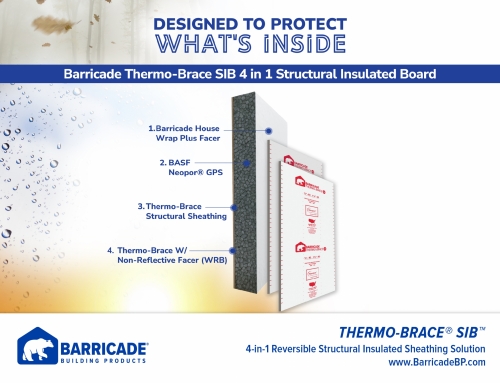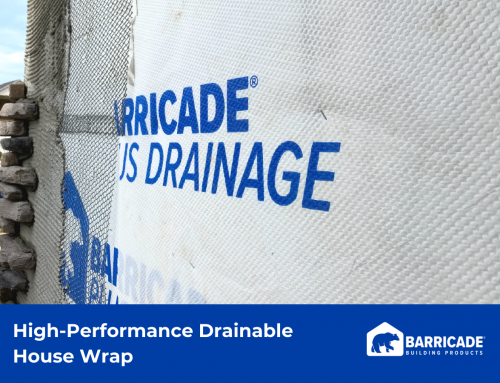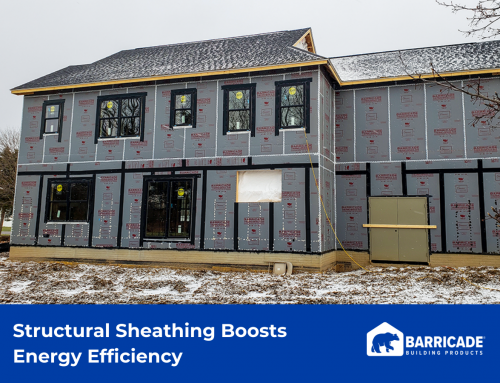House wrap is an air barrier that creates an airtight structure by stopping air flow through a building’s envelope. A lack of air tightness lowers the effective R-value1 of the wall assembly and reduces the energy-efficiency and air quality of a building. A building’s first defense against air infiltration is typically the siding. However, many sidings have small gaps and cracks in the joints where siding panels line up that lead to air infiltration.
House wrap is the backup barrier to siding that further prevents unwanted air flow into the wall’s cavities. For a house wrap to stop air flow, it should be continuous over the entire building enclosure. House wrap must also withstand the forces that act on it during and after construction and be durable over the lifetime of the building. Unfortunately, there are several reasons a house wrap can leak after installation.
- House wrap seams that are not sealed properly can cause air leaks. Sealing house wrap joints with manufacturer’s tape can improve the wrap’s performance by about 20 percent. Sealing the seams after installing the house wrap is essential to an airtight building.
- Using the wrong fasteners can cause air leaks. It is crucial for airtightness to use manufacturer’s stapling nails or nails designed to hold down house wrap material. Also, nails should be at least 1-inch long and spaced 12 to 18 inches on-center.
- Not repairing the tears, rips, or cuts in the house wrap that occur during installation can lead to air leaks. It is critical to seal the damaged house wrap with code-approved contractor sheathing tape before covering with siding. Repair of larger tears in house wrap requires a taped 6-inch overlap of house wrap.
- Not sealing the bottom edges of the house wrap can lead to air leaks.
- Air leaks can occur if the house wrap is cut to lie flat before installing siding, but not repaired.
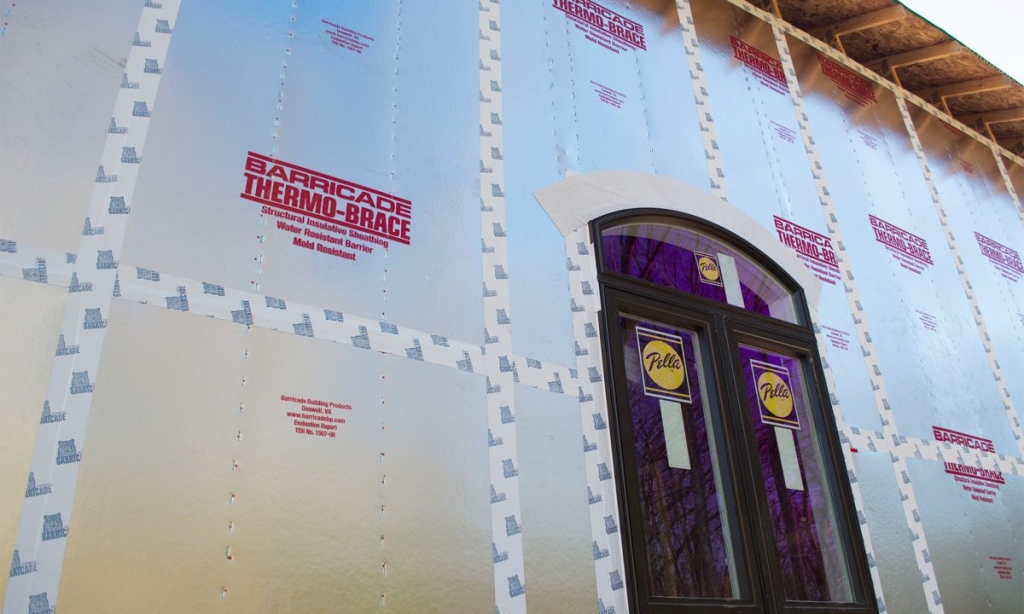
- Air leaks can occur if the edges of the house wrap, cut at the rough windows and door, are not sealed. This error is common when installing utilities, pipes, cable tv, etc. For airtightness, wrap the fabric around the edges of windows and doors to the inside of the frame and seal with house wrap tape.
- Improper overlapping of roles of house wrap can cause air leakage. Overlap and seal vertical seams by at least 6 inches. Overlap and seal horizontal seams by at least 4 inches.
- Air leakage can occur if the house wrap does not reach the top of the wall. The house wrap should wrap up and over the top plate.
- If the house wrap is left exposed to excessive UV rays, the house wrap may deteriorate rapidly.
- If a house wrap is not resistant to cold, it may crack at low temperatures.
House wrap has several important qualities that make it an essential and required feature of today’s high-performance buildings. House wrap is a breathable barrier that keeps water out and allows water vapor to flow, which keeps the wall sheathing dry. House wrap also improves energy-efficiency by stopping air from infiltrating through the walls.
Maximizing the air barrier potential of house wrap requires the use of a quality house wrap, along with skilled house wrap installers. A quality house wrap should have high-tear and tensile strength, UV stability, cold resistance and ease of installation, which will limit damage and errors during construction.
For Airtightness, Choose a House Wrap with High-Tear and Tensile Strength
A house wrap should withstand the handling and application process without becoming damaged. The tear resistance, or tensile strength of the product, is the best measure of the likeliness of the house wrap to tear, rip or get damaged during construction. A high-tear resistant house wrap is also strong enough to hold up during strong winds and weather events.
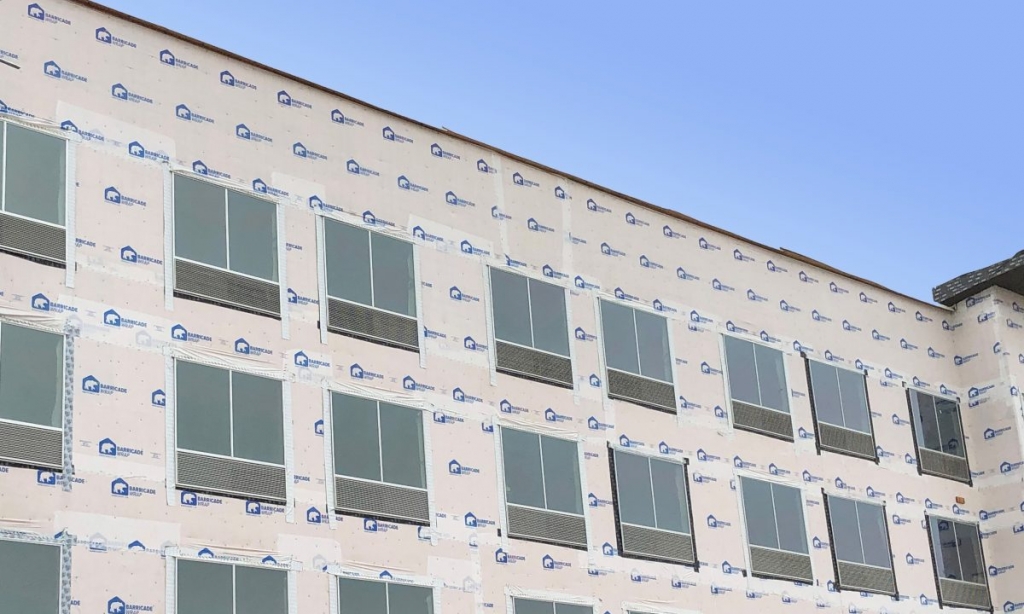
For Durability and Airtightness, Choose a House Wrap that is UV and Cold Resistant.
Prolonged exposure to UV radiation can cause the house wrap to photo-degrade, discolor, break or split and loss water repellency. Excessive cold may also damage house wrap. A quality house wrap must be both UV and cold resistant.
Avoid Damage During Construction with Easy to Install House Wraps
Ease of installation of a house wrap can improve the chances of creating a leak-proof building. An air leak can occur if a house wrap is damaged or not installed correctly. Creating an airtight building requires proper wrapping and sealing of the house wrap, utilizing correct fasteners, and fixing damaged areas of the house wrap. Choosing an easy to install house wrap will limit problems during construction and lessen the chance of air leaks after installation.
Barricade® Building Wraps Create Airtight Buildings
Barricade® Building Wraps are high-quality house wraps that create airtight buildings. Barricade® Building Wrap is tear resistant, UV resistant and easy to install.
- The tear-stop design of the Barricade gives it the strength and durability to resist heavy winds and construction mishaps.
- Barricade Building Wrap has ultraviolet stabilizers that protect the house wrap from the sun’s harsh rays for up to 12 months.
- Barricade is easy to install. It is lightweight, easy to handle, and translucent.
Properly installed, high-quality house wraps can help stop the air flow across a building’s envelope and create an airtight, high-performance building. A quality house wrap must be tear, UV, and cold resistant, and easy to install. Visit Barricade Building Products for more information on why house wraps leak.
1The effective R-value of a building’s wall assembly is a measure of its resistance to airflow.

